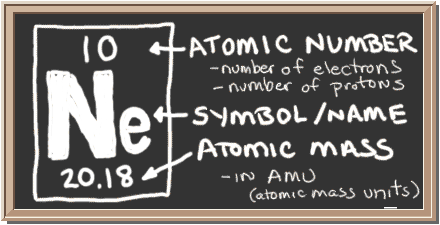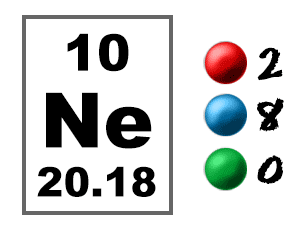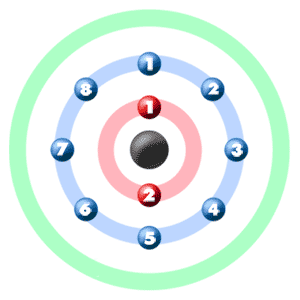
Check out the blackboard. That box on the left has all of the information you need to know about one element. It tells you the mass of one atom, how many pieces are inside, and where it should be placed on the periodic table.
In the next section we're going to cover electron orbitals or electron shells. This may be a new topic to some of you.
Electrons In The Shells
Take a look at the picture below. Each of those colored balls is an electron. In an atom, the electrons spin around the center, also called the nucleus. The electrons like to be in separate shells/orbitals. Shell number one can only hold 2 electrons, shell two can hold 8, and for the first eighteen elements shell three can hold a maximum of eight electrons. As you learn about elements with more than eighteen electrons you will find that shell three can hold more than eight. Once one shell is full, the next electron that is added has to move to the next shell.So... for the element of NEON, you already know that the atomic number tells you the number of electrons. That means there are 10 electrons in a neon atom. Looking at the picture, you can see there are two electrons in shell one and eight in shell two. Because shell two has eight electrons it is now full.


Examples of Compounds with Neon
NeonHey! Neon (Ne) is the second of the noble gases. Just like all noble gases, it is very non-reactive. So much so, that it doesn't form compounds with anything. Just like helium (He) and argon (Ar), neon floats around all by itself.It is non-reactive because it's shells are full. Because neon has two atomic shells, it needs two electrons in the first and eight to fill the second. Neon has a total of ten electrons which means two filled shells. |
|
|




